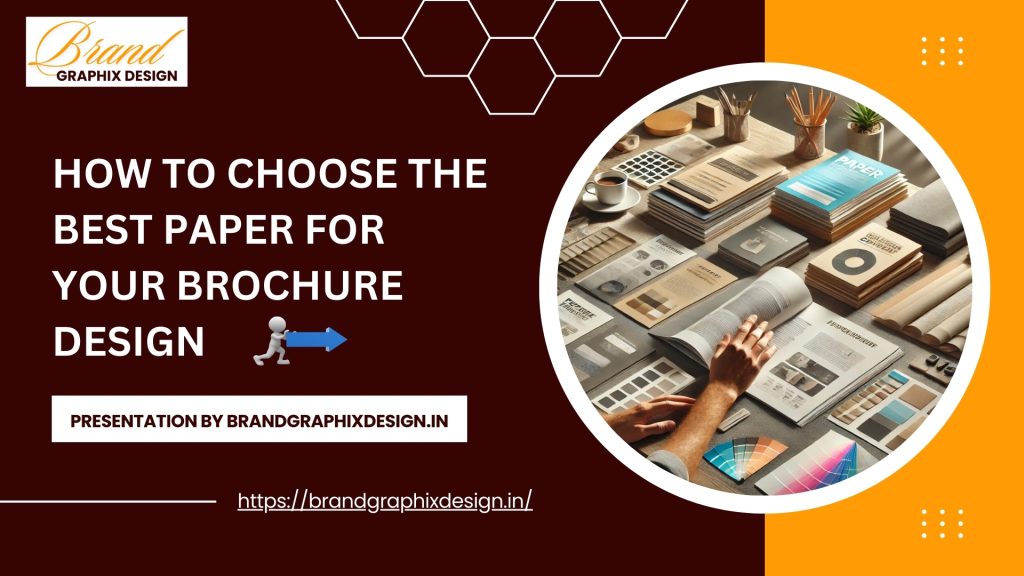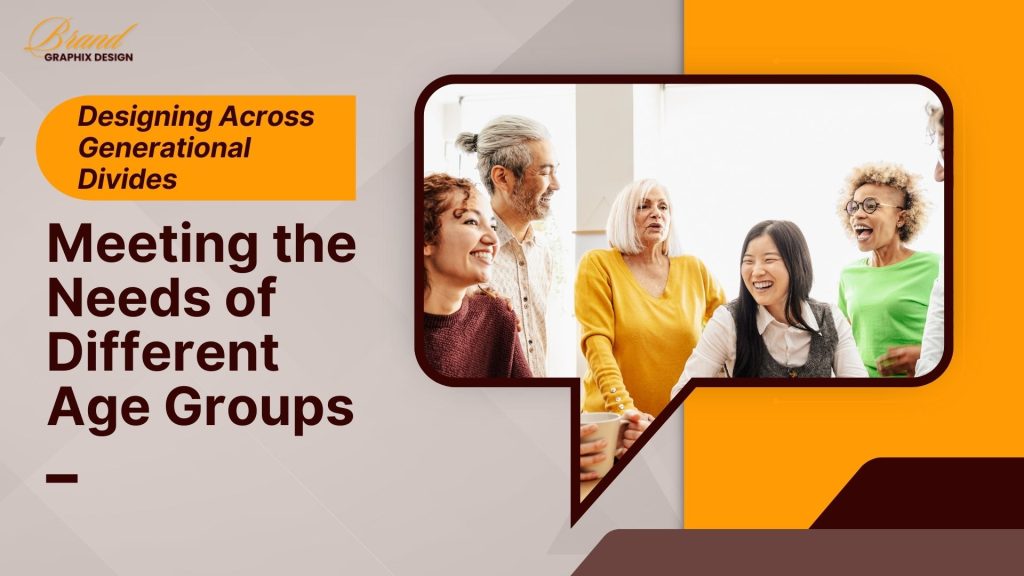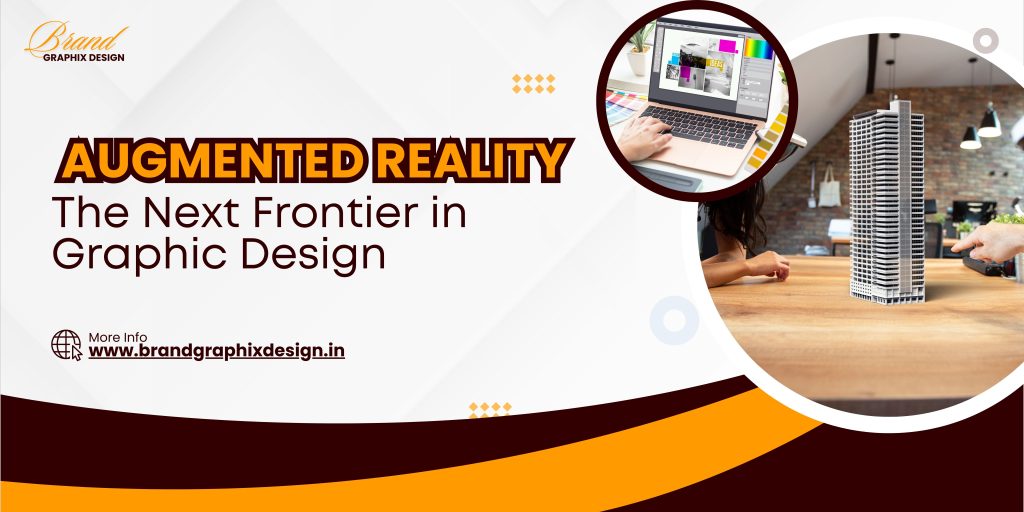When it comes to designing a brochure, the choice of paper is just as important as the design itself. The type of paper you choose can significantly impact the look, feel, and overall effectiveness of your brochure. Whether you’re creating a brochure for marketing, informational purposes, or event promotions, selecting the right paper can enhance your message and make a lasting impression on your audience. In this blog, we will guide you through the process of choosing the best paper for your brochure design, covering everything from paper types to finishes and how these choices can affect the final product.
Understanding the Importance of Paper in Brochure Design
The paper you choose for your brochure is more than just a medium for your design; it’s a key element that can influence how your brochure is perceived. The right paper can enhance colors, add texture, and give your brochure a professional feel. On the other hand, the wrong paper choice can make your brochure look cheap, less durable, or even difficult to read. Therefore, understanding the different aspects of paper selection is crucial for creating an effective brochure.
- First Impressions: The paper quality often creates the first impression of your brochure. High-quality paper can convey professionalism and attention to detail.
- Durability: Choosing a durable paper ensures that your brochure withstands handling and lasts longer, which is especially important for brochures that are meant to be kept as reference materials.
- Visual Appeal: The texture, weight, and finish of the paper can enhance the visual appeal of your brochure, making colors pop and text easier to read.
Types of Paper for Brochure Design
There are several types of paper you can choose from when designing a brochure, each with its own characteristics and best-use scenarios. Understanding these options will help you make an informed decision based on your brochure’s purpose and target audience.
1. Glossy Paper
Glossy paper is one of the most popular choices for brochures, especially those used for marketing and advertising. The shiny finish of glossy paper makes colors appear more vibrant and images more eye-catching. This type of paper is ideal for brochures that contain a lot of images or colorful graphics.
- Vibrant Colors: The glossy finish enhances color saturation, making your brochure visually appealing.
- Professional Look: Glossy paper gives your brochure a polished, professional appearance.
- Fingerprint Sensitivity: One downside of glossy paper is that it can show fingerprints easily, which might require extra care during distribution.
2. Matte Paper
Matte paper offers a non-reflective finish, which makes it a great choice for brochures with a lot of text. The lack of glare on matte paper makes it easier to read, and it also provides a softer, more elegant feel compared to glossy paper. This type of paper is often used for corporate brochures or informational materials.
- Readability: The non-reflective surface of matte paper makes text easier to read, reducing eye strain.
- Subtle Finish: Matte paper gives a more subdued, sophisticated look, which is ideal for formal or corporate brochures.
- Less Vibrant Colors: While matte paper provides excellent readability, it may not make colors as vibrant as glossy paper.
3. Uncoated Paper
Uncoated paper has a natural texture that gives your brochure a more organic and tactile feel. This type of paper is absorbent, making it ideal for brochures that are meant to have a rustic or minimalist look. Uncoated paper is also easy to write on, which can be beneficial if your brochure includes forms or areas where recipients need to fill in information.
- Natural Texture: The uncoated surface provides a natural, organic feel that is perfect for eco-friendly brands or designs that aim for a minimalist aesthetic.
- Easy to Write On: If your brochure requires writing, such as for feedback forms or notes, uncoated paper is the best choice.
- Absorbency: Because uncoated paper absorbs ink more, colors may appear more muted compared to coated papers.
4. Recycled Paper
Recycled paper is an excellent option for businesses that want to promote sustainability. This type of paper is made from recycled materials, which reduces the environmental impact of your brochure. Recycled paper can come in various finishes, including glossy, matte, and uncoated, giving you flexibility in design while also aligning with eco-friendly values.
- Eco-Friendly: Using recycled paper shows your commitment to sustainability, which can enhance your brand’s image among environmentally conscious consumers.
- Variety of Finishes: Recycled paper is available in different finishes, so you can still achieve the desired look for your brochure while being environmentally responsible.
- Texture Variability: Recycled paper may have slight texture variations, which can add character but may not be suitable for all types of designs.
Choosing the Right Paper Weight
The weight of the paper, often referred to as “gsm” (grams per square meter), plays a crucial role in the feel and durability of your brochure. Heavier paper typically feels more substantial and is more durable, while lighter paper is more flexible and less expensive.
1. Light Weight (150-170 gsm)
Lightweight paper is generally used for brochures that will be mass-distributed or included in mailings. This type of paper is cost-effective and easy to handle, making it a popular choice for event flyers, product sheets, or informational brochures that don’t need to be kept for long.
- Cost-Effective: Lightweight paper is less expensive, making it ideal for large print runs.
- Flexible: The lighter weight makes these brochures easy to fold, distribute, and store.
- Less Durable: Lightweight paper is more prone to creasing and tearing, so it may not be suitable for high-impact or long-term use.
2. Medium Weight (170-250 gsm)
Medium-weight paper strikes a balance between durability and cost. It’s commonly used for corporate brochures, product catalogs, and other materials that need to be both sturdy and attractive. This paper weight offers a good level of durability while still being flexible enough for various design options.
- Balanced Durability: Medium-weight paper offers better durability than lightweight options, making it suitable for longer-lasting brochures.
- Versatile: This paper weight is versatile and works well for both single-fold and multi-fold brochures.
- Professional Look: The added weight gives your brochure a more premium feel, which can enhance its perceived value.
3. Heavy Weight (250-350 gsm)
Heavyweight paper is ideal for high-end brochures that are meant to impress. This type of paper is sturdy and feels luxurious to the touch, making it perfect for brochures that are intended to be kept and referenced over time, such as real estate portfolios, luxury product catalogs, or corporate presentations.
- Luxurious Feel: The substantial weight of this paper gives your brochure a high-end, premium feel.
- Durability: Heavyweight paper is highly durable, ensuring that your brochure can withstand frequent handling.
- Less Flexible: While durable, heavyweight paper is less flexible, which may limit some design options, such as intricate folds.
Paper Finishes: Glossy vs. Matte
After choosing the type and weight of your paper, the next consideration is the finish. The finish affects not only the appearance but also the tactile experience of your brochure. The most common finishes are glossy and matte, each offering distinct advantages depending on your design goals.
Glossy Finish
A glossy finish is highly reflective and makes colors appear more vibrant and images sharper. This finish is ideal for brochures with lots of images, such as product catalogs or travel brochures, where visual appeal is a top priority.
- Vivid Colors: Glossy finishes enhance the vibrancy of colors, making images stand out.
- Professional Appeal: The shiny, polished look of a glossy finish gives your brochure a sleek, professional appearance.
- Reflective Surface: The reflective surface can cause glare, which may make text difficult to read under certain lighting conditions.
Matte Finish
A matte finish offers a more subtle, non-reflective surface that is ideal for brochures with a lot of text. The matte finish provides a sophisticated look and feels, making it a
good choice for corporate or informational brochures where readability is key.
- Readable Text: The non-reflective surface of a matte finish makes text easier to read, even in bright lighting.
- Elegant Look: Matte finishes provide a smooth, elegant feel, adding a touch of sophistication to your brochure.
- Softer Colors: Colors may appear slightly muted on a matte finish compared to a glossy finish, which may or may not align with your design goals.
Consider Environmental Impact
As businesses and consumers become more environmentally conscious, the choice of paper for your brochure can also reflect your commitment to sustainability. If eco-friendliness is important to your brand, consider using recycled paper or choosing a paper supplier that follows sustainable practices.
1. Recycled Paper
Recycled paper is made from post-consumer waste and can be a great option for businesses looking to reduce their environmental footprint. This type of paper is available in various finishes and weights, so you don’t have to sacrifice quality for sustainability.
- Sustainable Choice: Using recycled paper reduces the demand for virgin paper, helping to conserve natural resources.
- Available in Various Finishes: Recycled paper can come in glossy, matte, or uncoated finishes, allowing you to maintain your brochure’s desired look and feel.
- Brand Image: Choosing recycled paper can enhance your brand’s image as environmentally responsible, which can resonate with eco-conscious customers.
2. FSC-Certified Paper
The Forest Stewardship Council (FSC) certifies papers that are sourced from responsibly managed forests. Using FSC-certified paper for your brochure ensures that the paper comes from forests that are managed in an environmentally sustainable and socially responsible manner.
- Eco-Friendly Assurance: FSC certification ensures that your paper is sourced from sustainable forests, supporting responsible forestry practices.
- Consumer Trust: FSC certification is recognized globally, and using FSC-certified paper can build trust with consumers who value sustainability.
- Quality Assurance: FSC-certified papers are available in various grades and finishes, ensuring that you don’t have to compromise on quality while being eco-friendly.
Specialty Papers for Unique Brochure Designs
If you want your brochure to stand out even more, consider using specialty papers that offer unique textures, finishes, or effects. These papers can add an extra layer of sophistication or creativity to your design, making your brochure memorable.
1. Textured Paper
Textured paper adds a tactile element to your brochure, making it more engaging to the touch. Common textures include linen, felt, and laid, each offering a distinct feel that can enhance your brochure’s overall design.
- Engaging Texture: Textured papers create a tactile experience that can make your brochure more memorable.
- Elegant Look: Certain textures, like linen or felt, add an element of luxury to your brochure, making it suitable for high-end brands.
- Design Compatibility: Consider how the texture will interact with your design elements, such as images or text, to ensure the final product looks cohesive.
2. Metallic Paper
Metallic paper offers a shiny, reflective finish that can make your brochure stand out. This type of paper is often used for special occasions or high-impact marketing materials where a touch of glamour is desired.
- High Impact: The metallic finish gives your brochure a striking, eye-catching appearance.
- Luxurious Feel: Metallic paper conveys a sense of luxury, making it ideal for premium products or services.
- Special Occasions: Consider using metallic paper for event brochures, invitations, or other materials where a wow factor is important.
3. Vellum Paper
Vellum paper has a semi-transparent quality that can be used creatively in brochure design. It’s often used as an overlay or insert, adding depth and interest to the brochure. Vellum can be printed on, allowing for unique design effects.
- Creative Design: Vellum’s semi-transparent quality allows for creative design possibilities, such as layering text over images or using it as an overlay.
- Visual Interest: Adding vellum inserts or overlays can create a sense of depth and intrigue in your brochure.
- Elegant Appearance: Vellum adds a delicate, sophisticated touch to your brochure, making it suitable for upscale or artistic designs.
Practical Tips for Choosing the Right Paper
Choosing the right paper for your brochure design involves more than just picking a type and finish. Here are some practical tips to help you make the best decision for your project:
1. Consider Your Budget
Your budget will play a significant role in determining the type of paper you can use. While high-end papers like textured or metallic finishes add a touch of luxury, they can also be more expensive. Consider your budget and choose a paper that offers the best balance between cost and quality.
- Balance Cost and Quality: Determine how much you can spend on paper and find an option that offers the best quality within your budget.
- Order Samples: Before making a final decision, order samples of different papers to compare their look and feel.
- Consider Quantity: If you’re printing a large number of brochures, a lower-cost paper might be more practical to stay within budget.
2. Think About Your Audience
Your target audience should influence your choice of paper. Consider who will be receiving your brochure and what impression you want to make. For example, a luxury brand might opt for a heavier, textured paper, while a startup might choose a more cost-effective, lightweight option.
- Audience Expectations: Consider what your audience expects in terms of quality and presentation when choosing your paper.
- Brand Alignment: Ensure the paper choice aligns with your brand’s image and message.
- Purpose of the Brochure: If your brochure is meant to be kept as a reference, choose a durable paper that will last.
3. Match Paper to Brochure Content
The content of your brochure should also influence your paper choice. If your brochure is image-heavy, a glossy finish might be best. For text-heavy brochures, a matte or uncoated finish will make reading easier. Consider the balance of text and images, and choose a paper that complements the content.
- Image-Heavy Design: Glossy paper is ideal for brochures with lots of images, as it makes colors vibrant and details sharp.
- Text-Heavy Design: Matte or uncoated paper is better for brochures with a lot of text, as it reduces glare and enhances readability.
- Content Flow: Think about how the paper choice will affect the flow and coherence of your brochure’s design.
4. Test Before Printing
Before committing to a large print run, it’s essential to test your design on the chosen paper. This will give you a clear idea of how the final product will look and feel. It’s also an opportunity to make any necessary adjustments to the design or paper choice.
- Print Proofs: Request print proofs from your printer to see how your design looks on the selected paper.
- Check Colors: Ensure that the colors appear as expected on the paper, especially if you’re using a specialty finish like glossy or metallic.
- Feel the Paper: Handle the paper to assess its texture, weight, and overall feel before finalizing your decision.
Are you ready to elevate your brochure design with the perfect paper choice? Contact us today at +91 91189 11171 for expert advice on selecting the best paper for your next project. Let’s work together to create a brochure that not only looks great but also makes a lasting impression on your audience.




